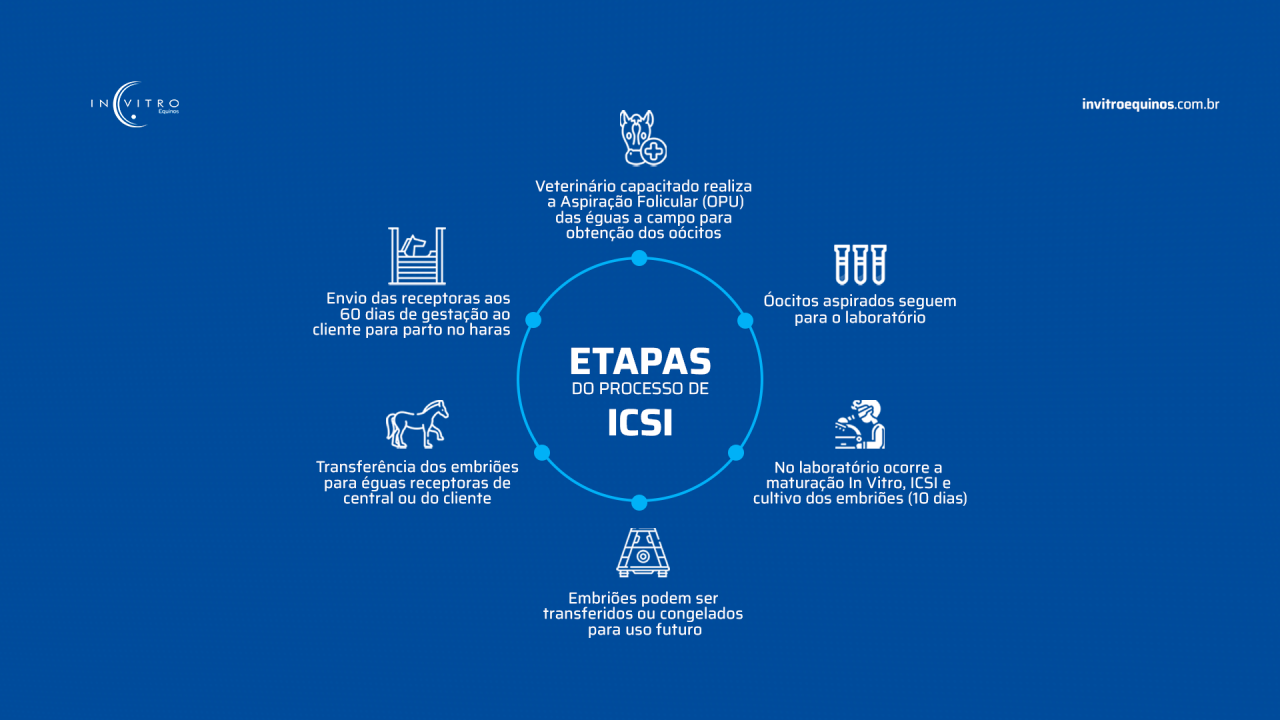ICSI
How ICSI works
Intracytoplasmic Sperm Injection (ICSI) is a procedure developed and applied commercially in horse for the embryos in vitro production of genetically superior mares, and/or stallions, using a single sperm by injection into each mature oocyte.
This technique involves:
- Follicular aspiration by Ovum Pick-up (OPU) of donor mares to collect the oocytes – it may be at the client´s stud farm or the reproduction center;
- Embryo production in the laboratory (maturation, ICSI, and embryo in vitro culture);
- Vitrification of embryos (cryopreservation);
- Transfer of embryos to recipients mares.
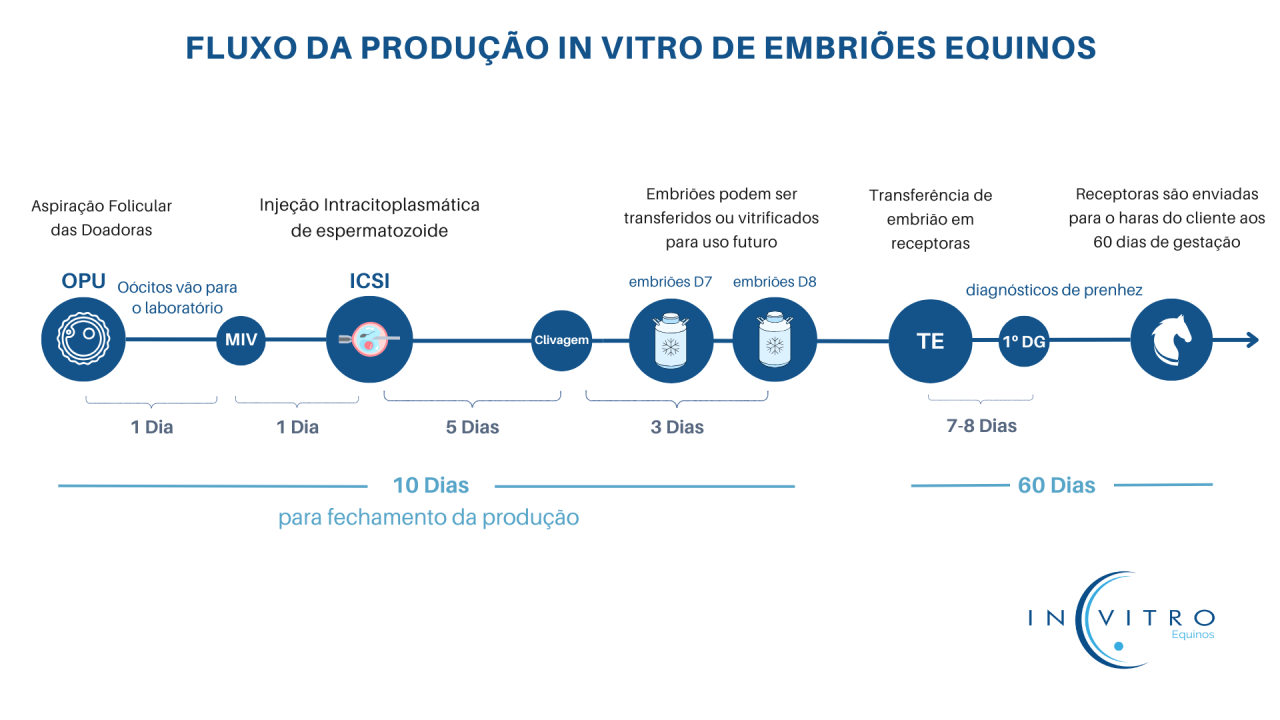

Numerous foals were produced using the ICSI technique in different parts of the world, including Brazil.
Indications
- Use of semen with low sperm motility or viability;
- Use of rare semen with low availability in the market or high value;
- Mares that develop follicular wave, but don’t have ovulation;
- Donor mares that don´t produce more embryos at the conventional flushing program due to problems in the uterus, oviduct, and /or cérvix;
- Stock of vitrified embryos for sale at auctions and / or own sale, or even as a tool for better use of recipient mares.
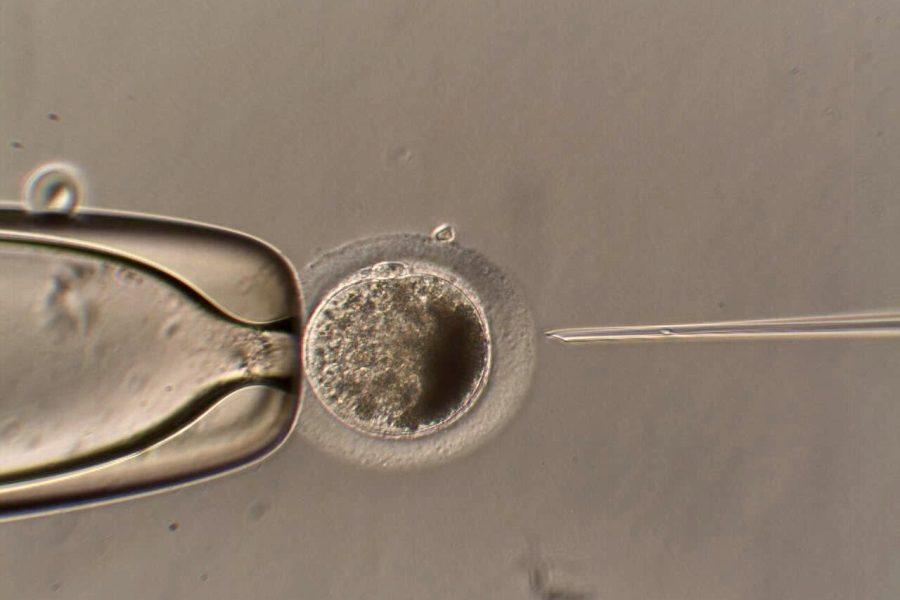
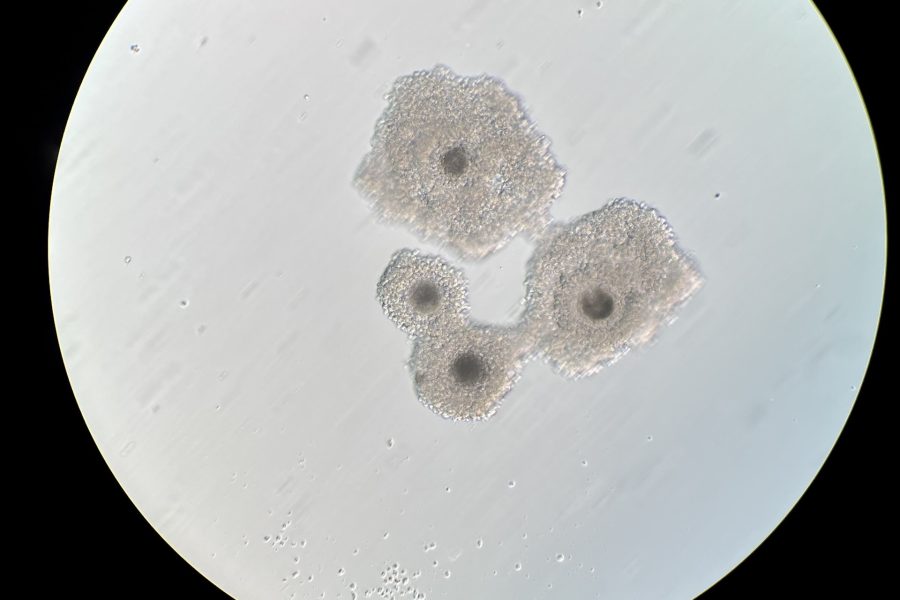
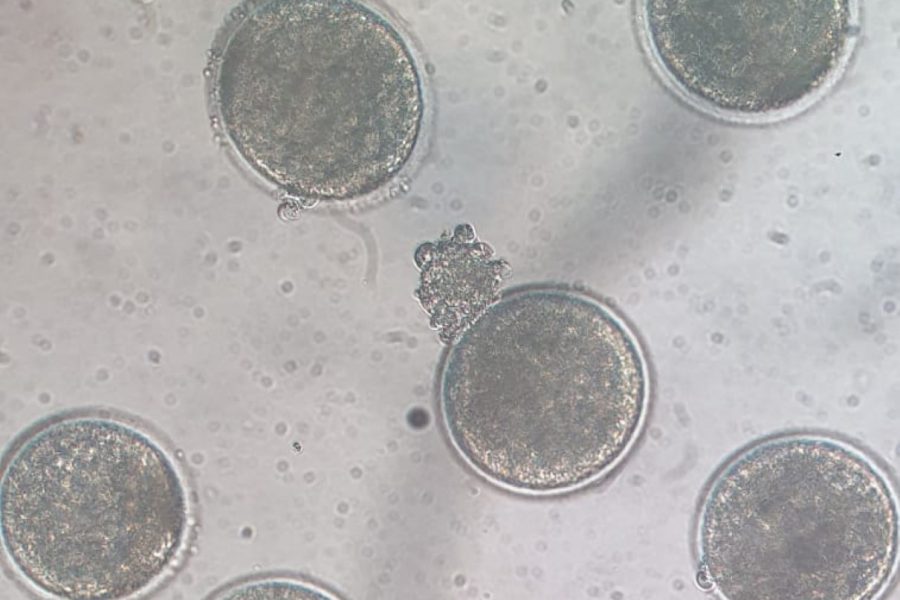
Expected Results
- 7 - 8 oocytes/mare/ OPU
- 21% average conversion rate of oocytes into embryos
- 2,0 embryo per donor mare per OPU
- 60% initial pregnancy rate
- 18-20% of early embryonic loss
ICSI results may vary due to factors such as:
- Donor preparation;
- Quality of donor gametes: which can be affected by advanced age, inadequate nutritional management, use of some drugs, presence of pathologies, and intrinsically individual effects;
- Quality of stallion gametes: which can be affected by individual sbufertilitsubfertility, use of some drugs harmful to spermatogenesis, pathologies, and inadequate storage;
- The quality and choice of the best moment of the recipients have a fundamental role in the final result of pregnancy.
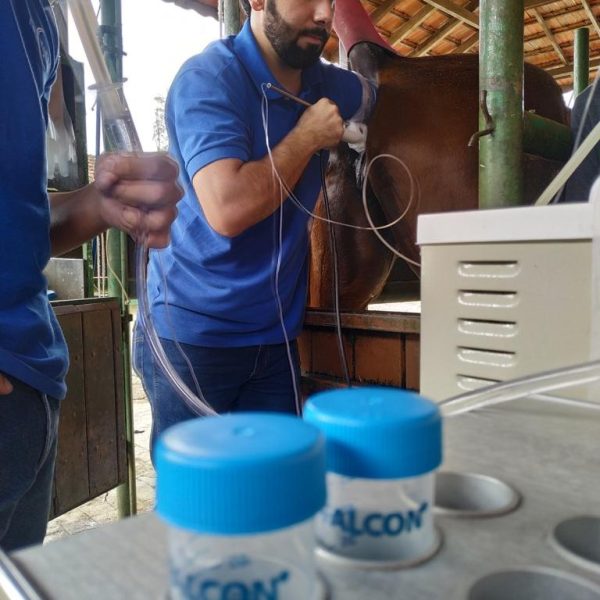
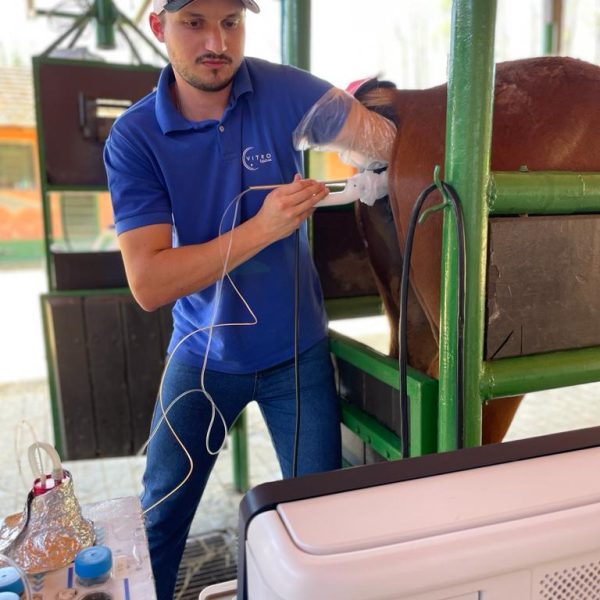
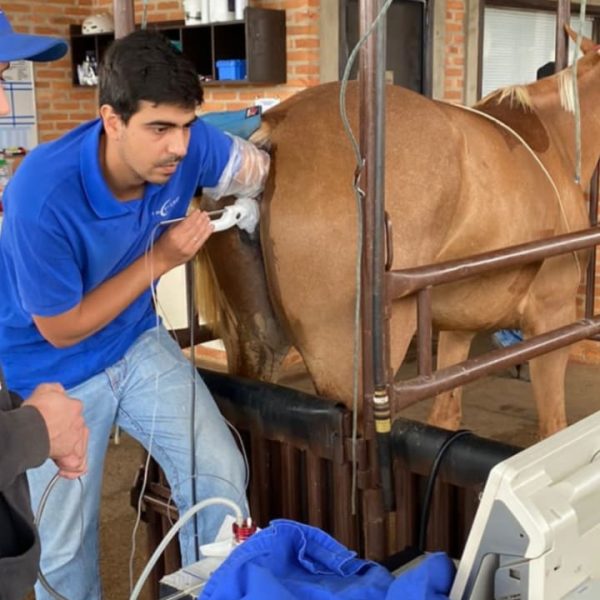
FAQ
The quality of the oocytes is very variable from one mare to another and tends to decline with the aging of the donor, bringing lower success rates compared to younger mares.
The number of oocytes can also be a limiting factor. Some mares have multiple follicles increasing the chances of obtaining oocytes.
Other mares usually have few and, in this case, we have smaller chances.
On average, it takes 3 cycles of aspiration to establish one pregnancy.
But, this is an average, as some mares (30%) generate multiple pregnancies in a single OPU, while others, with few oocytes or low viability semen, will have a greater challenge to produce an embryo and pregnancy.
- Contention stock in a covered place;
- Electricity point near the stock;
- Table or bench to support the OPU equipment.
- Water point near the stock, for cleaning the mares;
- At least one person from the stud/center, who is responsible for accompanying the mare in the stock throughout the procedure;
- Laboratory/room for oocyte selection: bench or table with energy and water point. This location must be a room/laboratory that will be closed practically during the entire procedure. One day before the departure of our team, this place must be cleaned with only water, neutral detergent, 70% alcohol, and a clean cloth. Do not use chemical products that may leave odor or residues, such as creolin and bleach, when cleaning.
Yes, but the laboratory will use more than one stallion for the same donor only when she has at least 8 mature oocytes.
We prefer to use one stallion per mare per aspiration.
The vitrification protocol currently used in our laboratory has produced the same pregnancy rate as that of fresh embryos. The advantage of vitrification is that these embryos can be thawed at a time when the supply of quality recipients is greater, contributing significantly to the result.
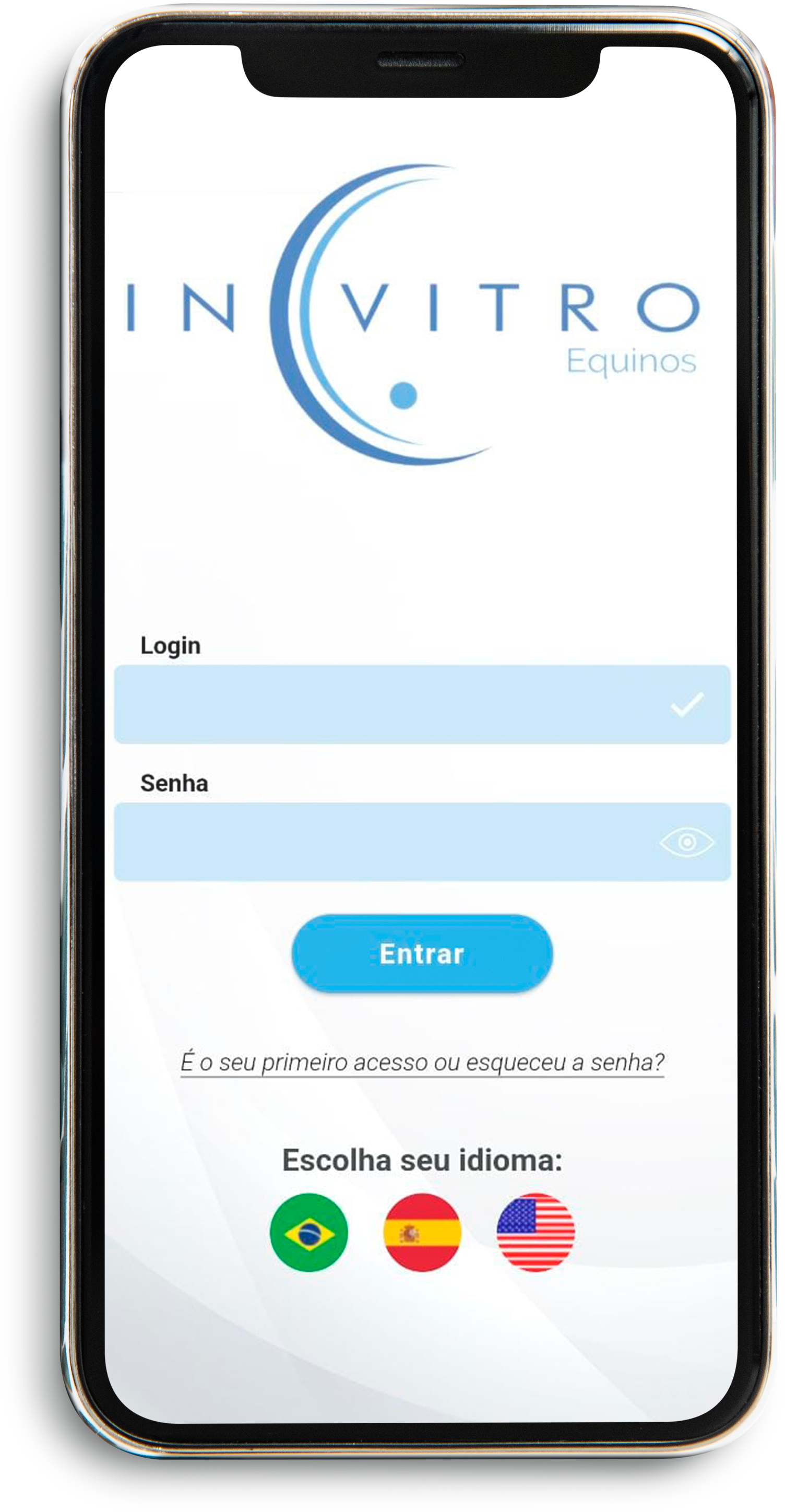
Our application (App)
Through our application, the customer can follow/consult:
- Results of each stage of embryo production;
- Stock of frozen embryos;
- Updates of pregnancy diagnosis of transferred embryos;
- Comparison of the customer's production rates versus the general result of In Vitro Equinos;
- Monitor donor rates and conversion data.

